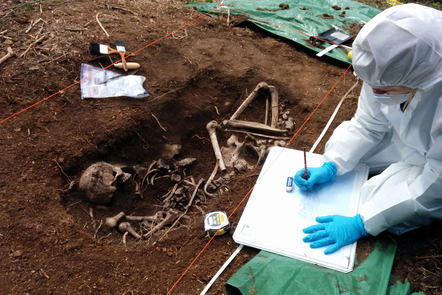I
finally got round to reading Peter Byrne's biography of Hugh Everett III.
It's a good book, weaving between three themes: Everett's thesis on the 'Many Worlds Interpretation'; his career as a cold-war nuclear strategist for the Pentagon; and his curiously unconventional personal life (swinger, incipient alcoholic, heavy smoker, womaniser, cynic, libertarian, genius).
The 'Many-Worlds' work was his proudest achievement, although he never published a word on quantum mechanics after his thesis paper. The physics establishment ignored the concept for two decades, while individuals around Bohr were poisonously hostile.
The historical treatment works well, showing how the controversies reflected ongoing preoccupations and progress in the community. Cosmology, quantum gravity and decoherence were later catalysts for renewed interest, as was quantum computing (
David Deutsch a key visionary here).
Everett's ideas were continually misunderstood, often wilfully. His concept of 'splitting universes' whenever a 'measurement' is made is actually a topological statement that the universe (multiverse) is a network (not a tree, which would fail time-reversibility) consisting of a non-denumerable infinity of evolving universes, each like our presently observed one, linked by 'measuring events'.
Three major issues continue to puzzle researchers. Everett believed he had derived the
Born probability rule from his topology: many physicists disagree.
The dispute seems highly technical.
Then there is the problem of the '
preferred basis', which reflects that the concept of superposition is itself basis-dependent, so that the act of splitting seems both arbitrary and non-consistent from point to point on the multiverse network (Everett thought this a non-issue as the act of measurement itself presupposes a basis).
Finally, and a point not brought out by the book, the state vector evolves (via the Schrödinger equation) in
Hilbert space, not our familiar four-dimensional spacetime. Yet the Everettian multiverse seems to be a network of
spacetime universes. How do we get from the ontology of Hilbert space to that of ordinary spacetime? This seems to be an
active research question.
Peter Byrne's book has the usual problems of pop-sci. It's conceptually too remote for a purely lay reader while too imprecise for someone who knows some quantum mechanics (the failure to differentiate spacetime and configuration space, for example).
There are the odd errors of authorial comprehension - Byrne does not appear to understand computer science and his explanation of the
Halting Problem is just wrong.
Finally, it's hard to write about the people doing the math and computer simulations for thermonuclear warfare, optimal counterforce strategies and assured destruction without taking some moral stance - but it's just parochial judging those guys, including Everett, from the 'superior' standpoint of an impeccable pacifistic-liberal. Biting the hand that fed you, methinks.
If you want to get a handle on the strange birth and tortuous development of the MWI, you couldn't do better than read this book. And as a bonus you get a voyeuristic tour of scarily-dysfunctional Everettian family life as well.
---
Sean Carroll has a
good defence of the MWI.
---
If you have a graduate level of understanding of quantum mechanics, here is your next step.
The definitive introduction to Everettian quantum mechanics.
---
Update: In the comments you will see a discussion as to whether it is really true that worlds can merge as well as split. Splitting occurs via the thermodynamically-irreversible process of decoherence and thus is overwhelmingly the likely thing to happen. Yet under very special circumstances, distinct worlds
can merge. This is highlighted in my
follow-up post.




















